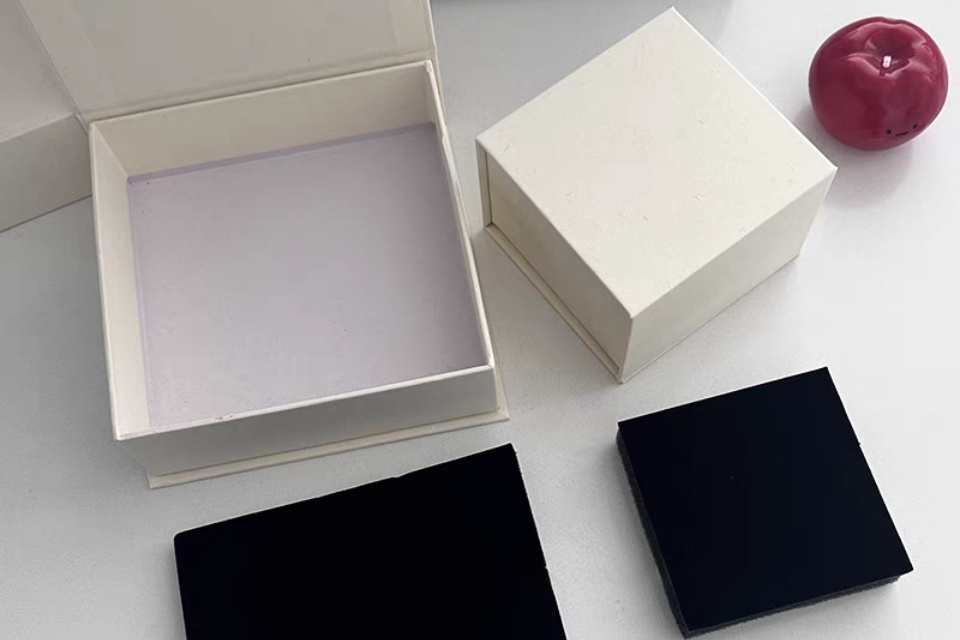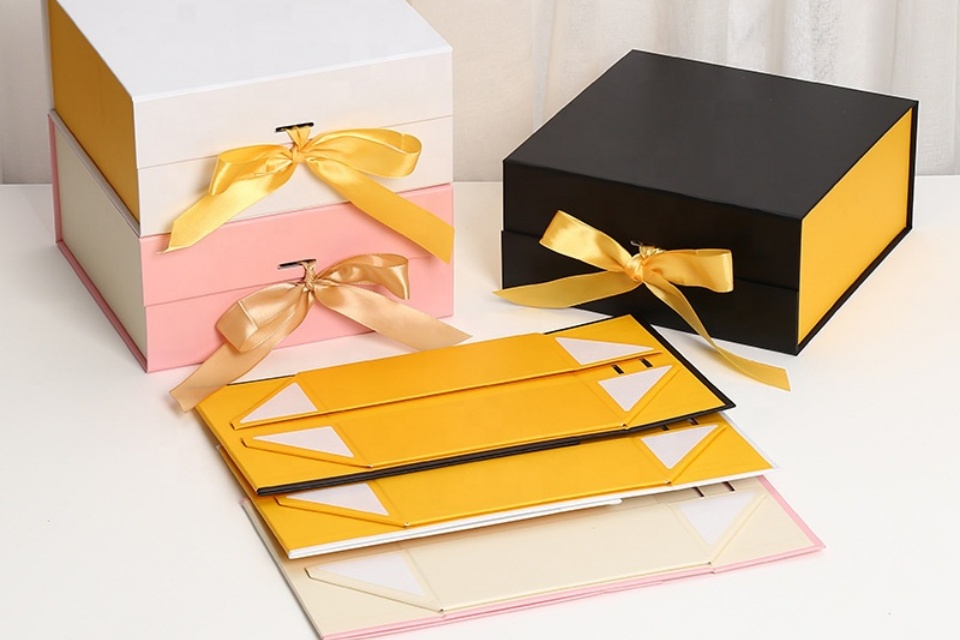Our News
Ensuring Quality And Sturdiness In Foldable Boxes
Ensuring Quality And Sturdiness In Foldable Boxes
Summary
Ensuring Quality and Sturdiness in Foldable Boxes refers to the methodologies and practices employed to create durable and reliable packaging solutions, primarily used across various industries including e-commerce, retail, and manufacturing. These boxes, which can be easily assembled and disassembled, are increasingly significant due to their versatility and environmental advantages over traditional packaging options. As global demand for sustainable and efficient packaging solutions rises, ensuring the quality and sturdiness of foldable boxes has become a paramount concern for manufacturers and consumers alike.
The notable aspects of foldable box production include the choice of materials, design considerations, and rigorous quality assurance methods. Common materials such as paperboard, plastics, and bioplastics are utilized for their specific properties, influencing the box's durability and sustainability. Additionally, the structural and aesthetic design of these boxes plays a crucial role in not only protecting the contents but also attracting consumers and enhancing brand visibility. Challenges related to material selection, regulatory compliance, and production quality are critical factors that companies must navigate to maintain high standards and meet customer expectations.
Controversies in this field often center around the environmental impacts of packaging materials, especially plastics, and the push for more sustainable practices. The increasing awareness and demand for eco-friendly packaging solutions have led to innovations in materials science, including the development of biodegradable options and advanced recycling methods. These developments highlight the industry's ongoing effort to balance functionality and environmental responsibility, responding to both regulatory pressures and consumer preferences for greener alternatives.
Overall, the focus on ensuring quality and sturdiness in foldable boxes is essential for maintaining product integrity, satisfying consumer demands, and fostering sustainability within the packaging industry. As technological advancements continue to emerge, the landscape of packaging is expected to evolve, presenting both opportunities and challenges for manufacturers aiming to lead in this competitive market.
Materials Used
The choice of materials for foldable boxes is essential in ensuring quality, sturdiness, and sustainability. Various materials are commonly employed, each presenting unique advantages and disadvantages.
Common Materials
Paperboard
Paperboard is a primary material used in foldable boxes due to its versatility and strength. It is predominantly made from cellulose fibers derived from trees (virgin stock) or recycled paper products. Paperboard is characterized by its thickness, typically exceeding 10-point or 12-point, and is categorized based on its performance features, such as foldability and resistance to cracking. The most favored type of paperboard for packaging is Folding Box Board (FBB), which consists of multiple layers of mechanical pulp sandwiched between layers of bleached chemical pulp. This structure provides excellent foldability and visual appeal, making it suitable for retail packaging.
Plastics
Plastics, including high-density polyethylene (HDPE), are often used for their durability and lightweight properties. They can be molded into various shapes and forms, offering significant flexibility in design. However, the environmental impact of plastic waste has led to increased scrutiny and the exploration of more sustainable alternatives.
Recycled and Bioplastics
Recycled materials, such as recycled paper and cardboard, are gaining popularity in packaging due to their lower environmental footprint. Additionally, bioplastics made from renewable resources like corn starch or sugarcane are being developed to offer biodegradable or compostable options that degrade more rapidly than traditional plastics. These materials reflect the growing trend towards sustainable packaging solutions.
Metals and Textiles
Metals, such as aluminum and steel, are utilized in packaging for their strength and recyclability, particularly in cans and foil packaging. Textiles, though less common, are utilized for bags and pouches, enhancing sustainability through reusability and providing an alternative for certain packaging applications.
Coatings and Enhancements
To improve the functionality and aesthetic qualities of paperboard, coatings can be applied. These may include polymer or clay coatings that enhance surface quality, printability, and barrier properties. Such enhancements are crucial for applications requiring moisture resistance or high-quality graphic presentation, making the packaging visually appealing to consumers.
Design Considerations
Structural and Material Integrity
One of the foremost considerations in the design of foldable boxes is the selection of materials, primarily paperboard, which is favored for its ability to withstand creasing and bending without cracking. The durability of the material is crucial for protecting the product during handling, shipping, and storage. Designers must strike a balance between weight, strength, and environmental impact when choosing materials, ensuring that the box can support its intended load without collapsing during stacking or transport.
The structural design, which encompasses how the box is folded and the locking mechanisms used, also plays a significant role in maintaining the integrity of the packaging. For lightweight items, a standard mono-carton design may suffice; however, heavier goods necessitate reinforced structures to ensure they remain secure throughout their lifecycle.
Functional and Aesthetic Design
The dual role of packaging design is to combine functionality with visual appeal. Packaging must not only protect the product but also attract consumers through its graphic design and structural elements. The pre-design process should include an analysis of packaging materials, the characteristics of the product, and fulfillment requirements. This foundational knowledge informs whether standard designs or custom solutions are necessary to best serve the product's needs.
In addition to structural considerations, innovative design elements, such as die-cutting for unique shapes and windows, can enhance the packaging's visual appeal and facilitate consumer engagement. Custom printing with vibrant colors and detailed imagery serves to communicate brand values and product information, making the packaging an effective branding tool.
Visual Hierarchy and Brand Consistency
Effective packaging design employs visual hierarchy to guide consumers, ensuring that crucial information—such as the product name, brand logo, and key features-is prominently displayed. Typography and color contrast play critical roles in achieving this balance, as they must be legible and appealing while reflecting the brand identity.
Consistency in branding across packaging not only fosters recognition but also builds trust with consumers. Customizable design solutions cater to diverse needs and can enhance the appeal of limited editions or seasonal releases. Moreover, multi-functional packaging, such as cartons that transform into storage solutions or display stands, adds value by extending the life of the packaging beyond its initial use.
By addressing these design considerations, companies can create foldable boxes that are not only sturdy and functional but also visually captivating, effectively communicating their brand story to the consumer.
Quality Assurance Methods
Quality assurance in the manufacturing of clear folding boxes is crucial for ensuring product durability, safety, and customer satisfaction. Various methods are employed throughout the production process to maintain high standards and mitigate potential issues.
Material Verification
The quality control process begins with material verification, where the raw materials used for the boxes are checked against specified standards. This includes assessing the quality of paper fibers, the thickness of corrugated boards, and the quality of adhesives used in construction. A thorough evaluation ensures that only suitable materials are utilized, minimizing defects in the final product.
Dimensional Testing
Automated measuring devices play a significant role in dimensional testing, ensuring that the boxes adhere to precise measurements. Manufacturers maintain minimal tolerances to guarantee that each box fits products consistently. This attention to detail is vital for preventing damage during shipping and storage.
Printing Quality
Printing quality is another critical area of focus. Advanced imaging techniques and spectrophotometry are employed to assess color accuracy and print integrity. Inspectors carefully evaluate samples against predetermined standards, checking for misalignments and color discrepancies. This process ensures that the visual presentation of packaging aligns with branding requirements and consumer expectations.
Structural Integrity
To assess structural integrity, manufacturers conduct various tests, such as edge crush tests, burst strength tests, and box compression tests. These tests simulate conditions that boxes may encounter during transit, allowing manufacturers to evaluate the durability and strength of the packaging. By predicting performance through computer-aided engineering (CAE), manufacturers can optimize design and material choices prior to physical testing.
Sustainability Audits
Given the growing emphasis on environmental responsibility, sustainability audits are performed to evaluate the recyclability of the materials used and the overall environmental impact of production practices. Compliance with eco-friendly standards is increasingly essential, as consumers demand sustainable packaging solutions.
Automated Inspection Systems
The integration of automated inspection systems enhances both efficiency and accuracy in quality control. These systems quickly detect defective boxes, reducing reliance on manual inspections and minimizing human error. Automation streamlines the quality assurance process, enabling faster identification of issues and more robust data collection for continuous improvement.
Advanced Testing Techniques
Beyond standardized tests, specialized testing methods may be implemented to address specific product needs or environmental conditions. For example, environmental conditioning tests simulate extreme temperatures and humidity, while stacking tests evaluate long-term durability under load. These tailored assessments help ensure that boxes not only meet industry standards but also perform well in real-world scenarios.
Industry Applications
Industrial and Automotive Sectors
The industrial and automotive segments are significant users of foldable boxes, accounting for a substantial revenue share of 31.81% in 2024. These containers are crucial for transporting heavy-duty components, machinery parts, and automotive assemblies. Their inherent features, such as stackability and reusability, provide considerable space and cost savings, particularly in return logistics. Original Equipment Manufacturers (OEMs) and Tier 1 suppliers in the automotive value chain increasingly utilize these containers for efficient warehousing and line-side inventory management.
Plastic Containers
Plastic containers dominate the foldable box market, capturing a revenue share of 53.83% in 2024. Their lightweight nature, corrosion resistance, and high strength-to-weight ratio make them ideal for various supply chain applications. Typically made from materials like high-density polyethylene (HDPE) or polypropylene (PP), these containers offer durability for repeated use across multiple end-use industries. Their capacity to withstand chemicals and moisture further enhances their appeal for both indoor and outdoor logistics scenarios.
E-commerce and Retail
The rise of e-commerce has led to an increased demand for foldable boxes that can accommodate the unique challenges of online shopping, including longer shipping times and the need for easy access to products upon arrival. Retailers are increasingly recognizing the benefits of using lightweight, collapsible containers, which streamline logistics and reduce waste. As industries strive for efficient, sustainable, and economical supply chain solutions, foldable boxes play a vital role in addressing these needs.
Regional Insights
The Asia-Pacific region is poised to lead the foldable box market, driven by rapid industrialization, manufacturing growth, and increased logistics activity. Countries like China, India, and those in Southeast Asia are particularly influential in the growth of foldable steel containers. Factors such as e-commerce expansion, warehouse automation, and demand for cost-effective shipping solutions are central to this trend. Similarly, in the UK, industries are recognizing the importance of efficient storage solutions, leading to a growing market for collapsible steel containers in logistics and retail sectors.
Technological Innovations
Emerging technologies, such as Al-enabled logistics tracking and automated inventory management, are reshaping the packaging landscape. These advancements enhance operational efficiency while minimizing material handling costs, enabling companies to optimize their storage and shipping processes. As the trend towards modular and transportable storage solutions grows, foldable boxes remain at the forefront of packaging innovations, catering to the evolving demands of various industries.
Innovations and Trends
The packaging industry is experiencing significant innovation, driven by a growing demand for sustainable, efficient, and functional solutions. Key players such as DS Smith plc, Schoeller Allibert, and Rehrig Pacific are leading this transformation by expanding their product portfolios and introducing novel materials to meet evolving customer needs and regulatory requirements.
Sustainable Practices
Sustainability is a major focus of recent packaging innovations. The rise of eco-friendly packaging practices is being driven by consumer preferences for materials that have minimal environmental impact. Biodegradable and compostable materials, derived from renewable resources, are becoming increasingly common, with starch-based bioplastics leading the charge. These materials not only reduce reliance on fossil fuels but also offer a pathway to mitigate plastic pollution by breaking down more readily in the environment. Furthermore, the implementation of sustainable practices has been shown to enhance brand loyalty, as customers are more inclined to support businesses that prioritize environmental responsibility.
Advancements in Materials Science
Innovations in materials science are pivotal in enhancing the strength, safety, and sustainability of packaging products. Emerging trends highlighted in reports indicate breakthroughs in metamaterials, bioplastics, and nanomaterials, which are reshaping how packaging is designed and utilized. For example, nanotechnology allows for the fine-tuning of materials at the molecular level, achieving unprecedented levels of performance that benefit both consumers and the environment.
Smart Packaging Solutions
Smart packaging has emerged as a revolutionary concept within the industry, merging materials science with digital technology to create interactive and responsive solutions. This includes the integration of radio-frequency identification (RFID) tags for real-time tracking and inventory management, as well as innovations such as edible packaging made from seaweed and rice paper. The market for smart packaging is expected to reach $48 billion by 2026, reflecting a strong demand for innovative solutions that enhance consumer interactions and improve supply chain efficiency.
Challenges in Production
The production of foldable boxes presents several challenges that manufacturers must navigate to ensure quality and sturdiness.
Quality Control Issues
One of the primary challenges in folding carton manufacturing is maintaining stringent quality assurance throughout the production process. In industries such as pharmaceuticals and cosmetics, the stakes are incredibly high; any mislabeling or improper packaging can lead to severe legal consequences. Therefore, implementing robust QA systems is essential to ensure that every carton meets the precise standards required for high-demand products. This becomes particularly challenging in environments characterized by shorter production runs and frequent setup changes, which can increase the likelihood of errors.
Material Selection and Durability Testing
Selecting the right materials is crucial for producing sturdy foldable boxes. Manufacturers are advised to use approved board and avoid hasty decisions regarding material choices. This includes conducting independent crush-strength or durability testing to verify the performance of the materials used. Additionally, it is important to monitor suppliers regularly to ensure the consistency and reliability of the materials provided, as even slight changes in the production process can impact the performance and appearance of the packaging.
Regulatory Compliance
Another significant challenge lies in adhering to regulatory compliance requirements, which vary across different markets. Packaging must meet specific labeling requirements, safety standards, and industry regulations to ensure consumer trust and safety. For example, packaging for pharmaceuticals may need to include child-resistant features, while food products often require tamper-evident seals. Failure to comply can result in legal ramifications and loss of consumer confidence.
Communication and Collaboration
Effective communication among all parties involved in the packaging process is vital to overcoming production challenges. Collaboration between packaging suppliers, brand managers, and designers must be established early in the project to address potential issues related to color, structural elements, and finishing effects. This ensures that any adjustments needed to meet quality standards can be made promptly, ultimately upholding the brand promise and delivering a functional and viable product.
Categories
Latest News
Contact Us
Contact: Aaron Lee
Phone: +8613570866244
Tel: +8675529490260
Add: Li Songlang 2nd Industrial Zone,No.18,FengTang Rd,Guangming New District


